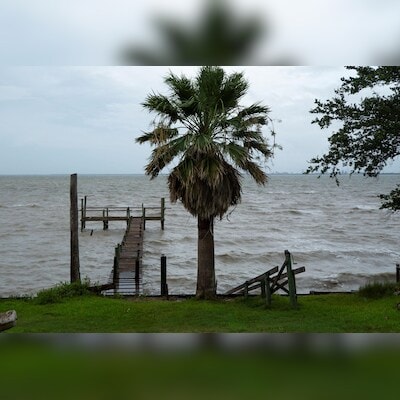US Gulf of Mexico oil firms begin hurricane damage checks, ports reopen | World News

)
Those losses helped boost US crude futures 2.5% to $68.97 per barrel on Thursday and natural gas futures nearly 4% to $2.357 per million British thermal units. (Photo: Reuters)
US Gulf of Mexico oil producers on Thursday were conducting safety checks and preparing to restart some output after Hurricane Francine disrupted operations, while a Louisiana oil refinery ramped up production and export ports reopened.
Francine missed Texas and hit the Louisiana coast on Wednesday with up to 100 mph winds (161 kph), knocking out power to up to 375,000 customers and bringing heavy rains and flooding to the state. Its winds dropped quickly and the storm was over southern Mississippi on Thursday where another 14,000 customers were without power.
As drillers began to assess damage, the extent of Francine’s impact on energy production emerged with new, higher estimates of lost output from the 169 offshore platforms evacuated.
Energy producers reported on Thursday they had shut-in 42 per cent, or 730,000 barrels per day (bpd) of Gulf of Mexico oil production and 53per cent, or nearly 992 million cubic feet of natural gas, offshore regulator Bureau of Safety and Environmental Enforcement said.
Those losses helped boost US crude futures 2.5 per cent to $68.97 per barrel on Thursday and natural gas futures nearly 4per cent to $2.357 per million British thermal units.
The storm likely disrupted about 1.5 million barrels of Gulf of Mexico production, analysts at UBS estimated, and will reduce the region’s monthly oil production by 50,000 bpd.
Chevron began conducting aerial inspections of its offshore oil and gas platforms and expects to return evacuated offshore staff and ramp up production after safety checks, a spokesperson said.
Exxon Mobil was increasing production at its 522,500-bpd refinery in Baton Rouge, Louisiana, after cutting its rates to 20per cent ahead of the storm, sources said.
Gas flows to liquefied natural gas (LNG) export plants were on track to fall to 11.7 billion cubic feet per day on Thursday from about 12.7 bcfd on Tuesday and 13.4 bcfd a week ago, data from financial firm LSEG showed.
Most of that reduction was due to a sharp drop in flows at Cameron LNG in Louisiana to 0.6 bcfd on Thursday, from 1.9 bcfd on Tuesday. Operator Sempra Infrastructure did not reply to requests for comment.
Louisiana ports including Cameron, Lake Charles, New Orleans, Plaquemines and St. Bernard reopened with restrictions, according to the US Coast Guard.
Meanwhile in Texas, the Port of Corpus Christi, the largest oil export port by volume, lifted restrictions, and ports in Freeport, Houston, and as far north as Sabine reopened, the Coast Guard said.
Several grain facilities remained without power after Hurricane Francine came ashore, though there was little major damage, the North American Export Grain Association and the National Grain and Feed Association said on Thursday night, citing reports from members.
The US Department of Agriculture’s Federal Grain Inspection Service, which ensures that crops meet quality standards, will perform official inspection and weighing services when all the export facilities are up and running, the groups said.
(Only the headline and picture of this report may have been reworked by the Business Standard staff; the rest of the content is auto-generated from a syndicated feed.)
First Published: Sep 13 2024 | 8:56 AM IST




